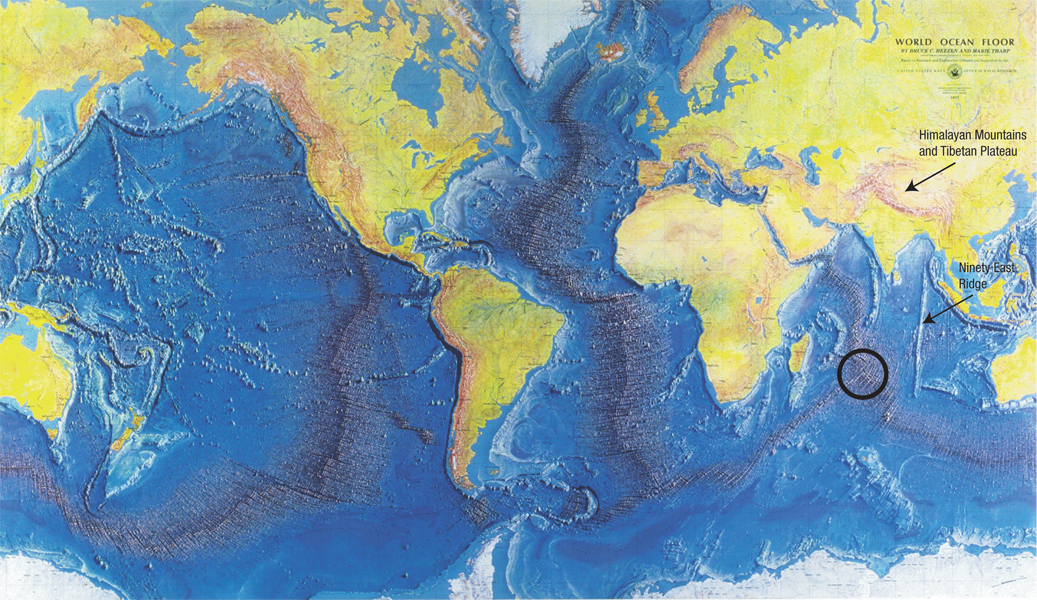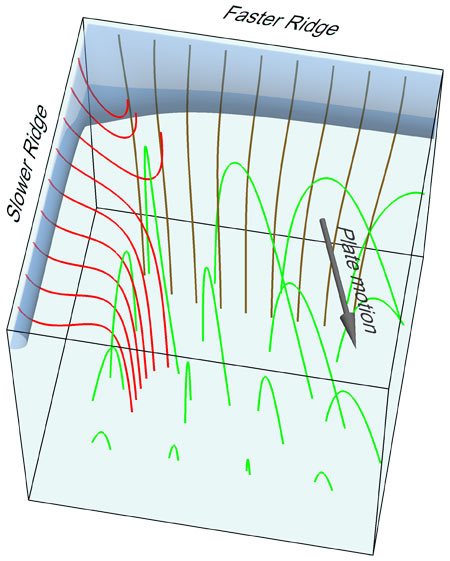In the Indian Ocean, there is a point where plate tectonics theory would indicate that two or three spreading centers intersect, with one or three terminating.
How does plate tectonics theory explain this feature?
The Hydroplate theory says there are no spreading centers. Instead, it says the mid-ocean rises are gravity-induced features; the response to mass being removed caused the new ocean floor to spring upward all around the planet.
However, it seems impossible for the seafloor to be spreading away from this point to be able to create the feature while maintaining plate theories.
How does plate tectonics theory explain this feature?
The Hydroplate theory says there are no spreading centers. Instead, it says the mid-ocean rises are gravity-induced features; the response to mass being removed caused the new ocean floor to spring upward all around the planet.
However, it seems impossible for the seafloor to be spreading away from this point to be able to create the feature while maintaining plate theories.
Last edited:



